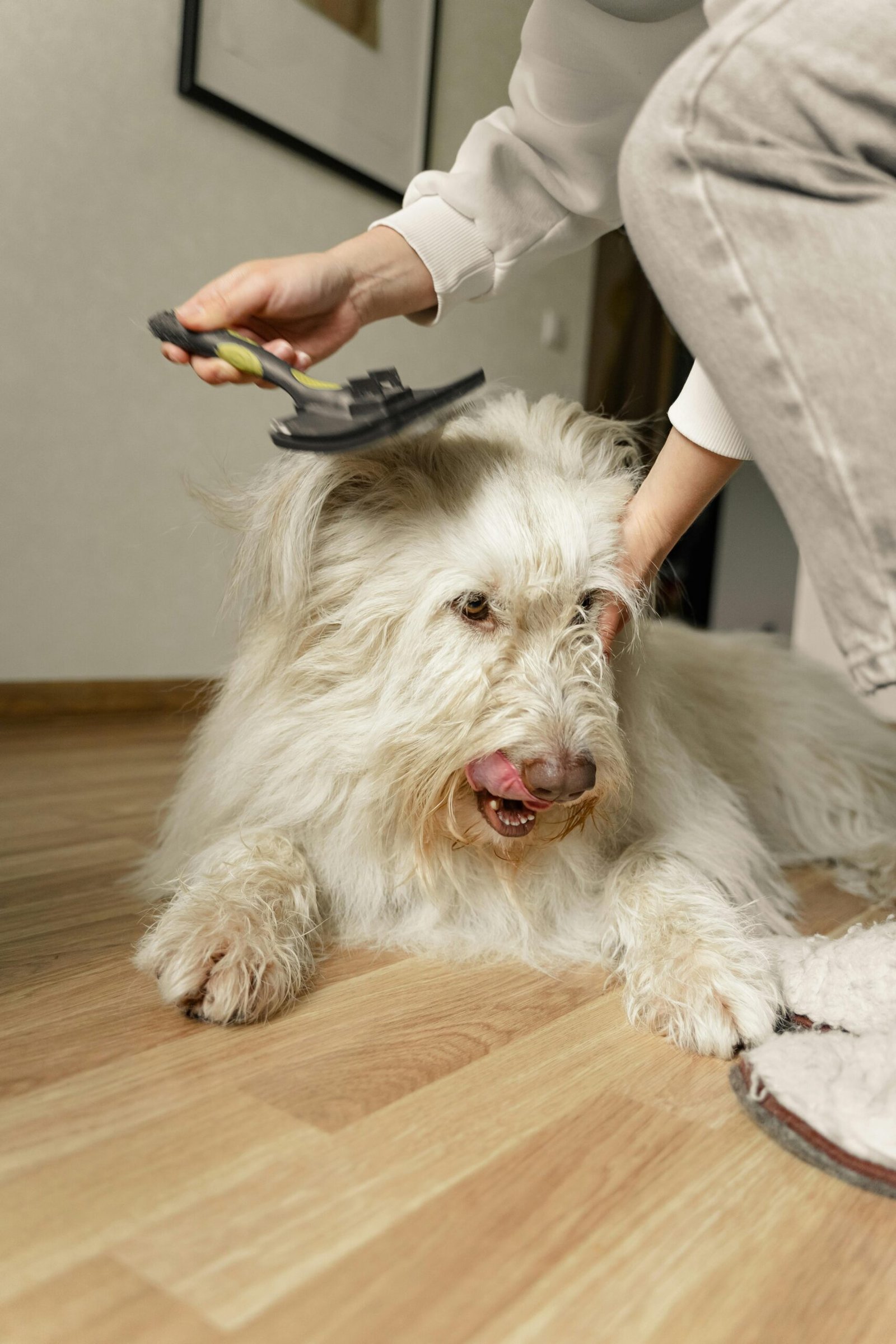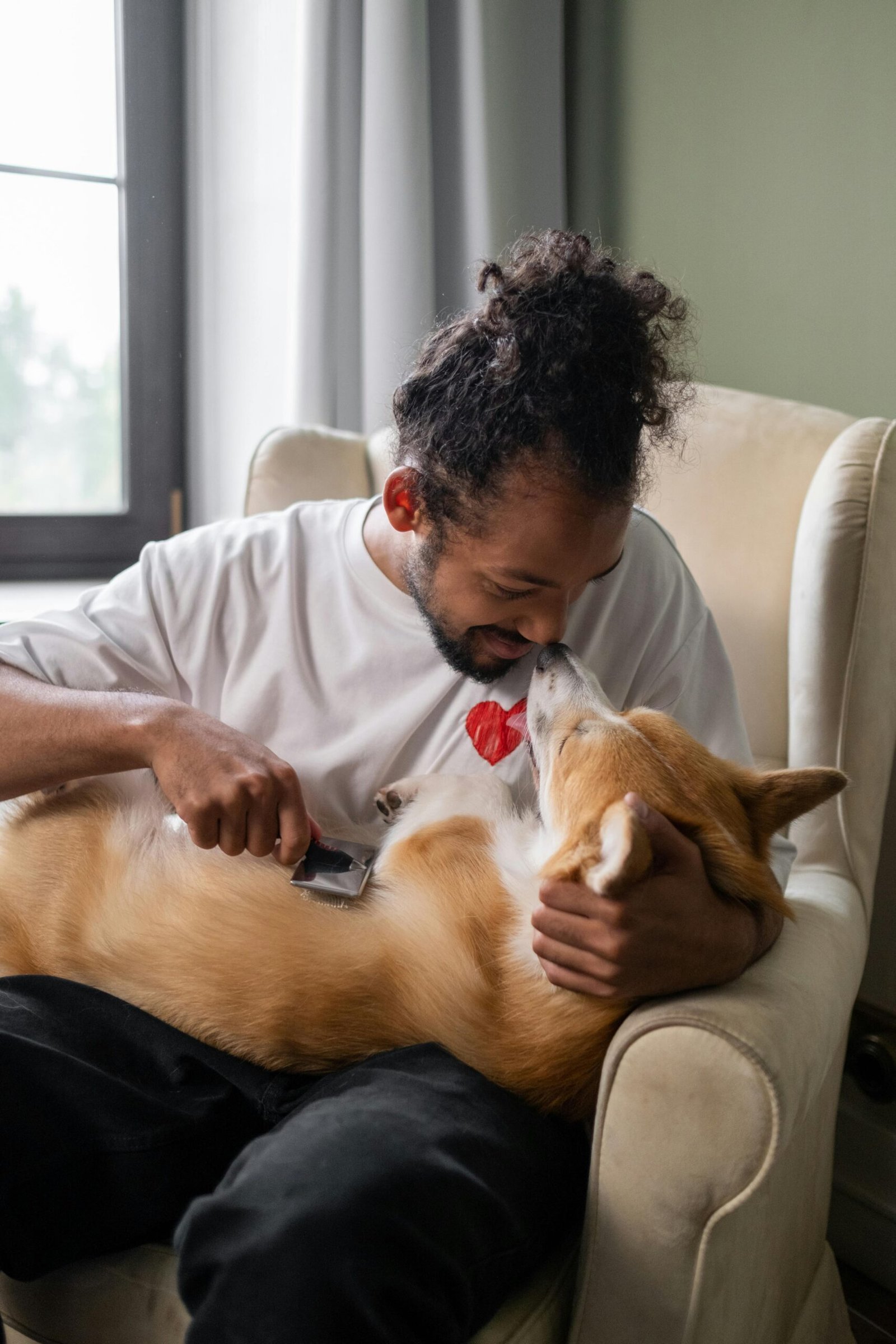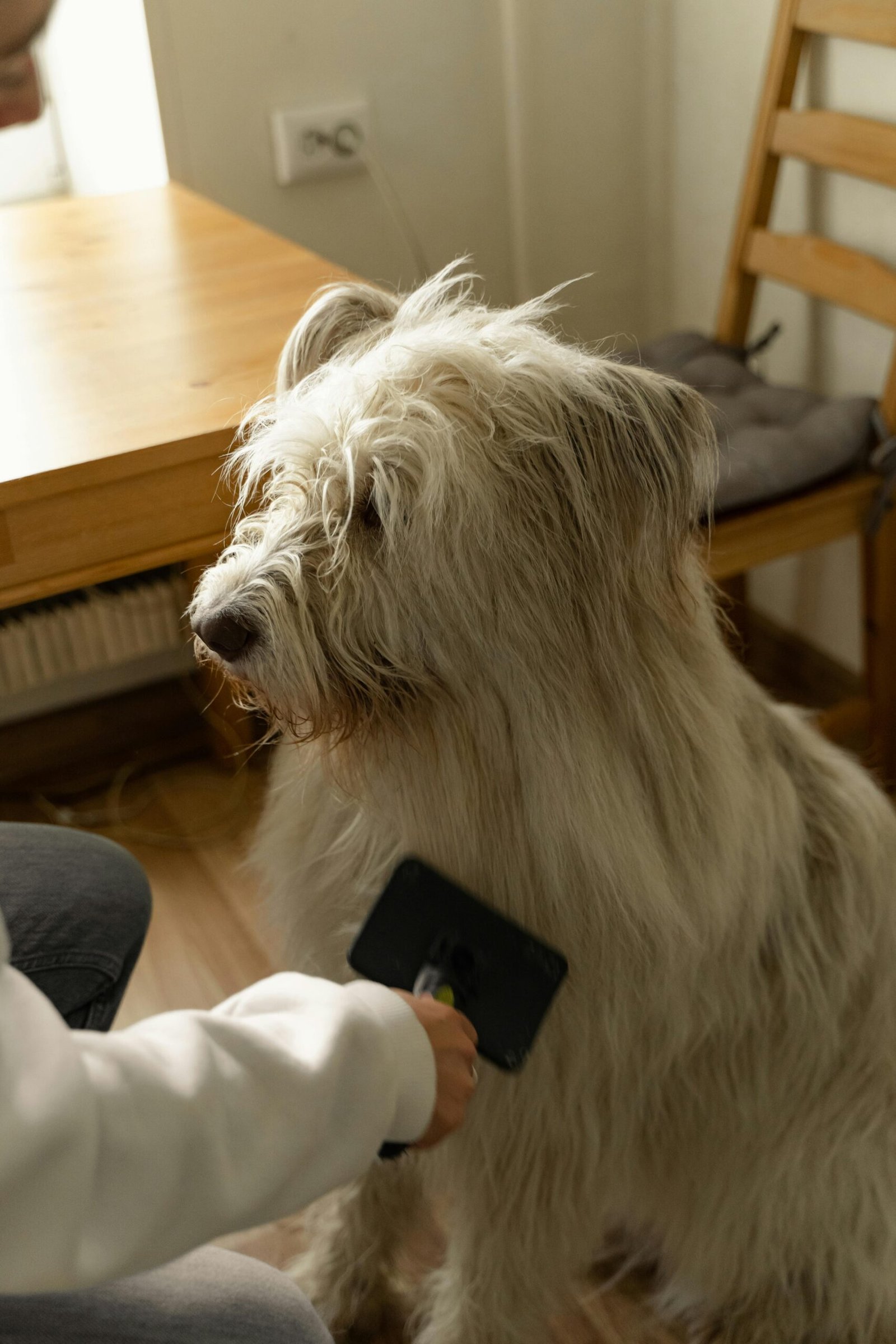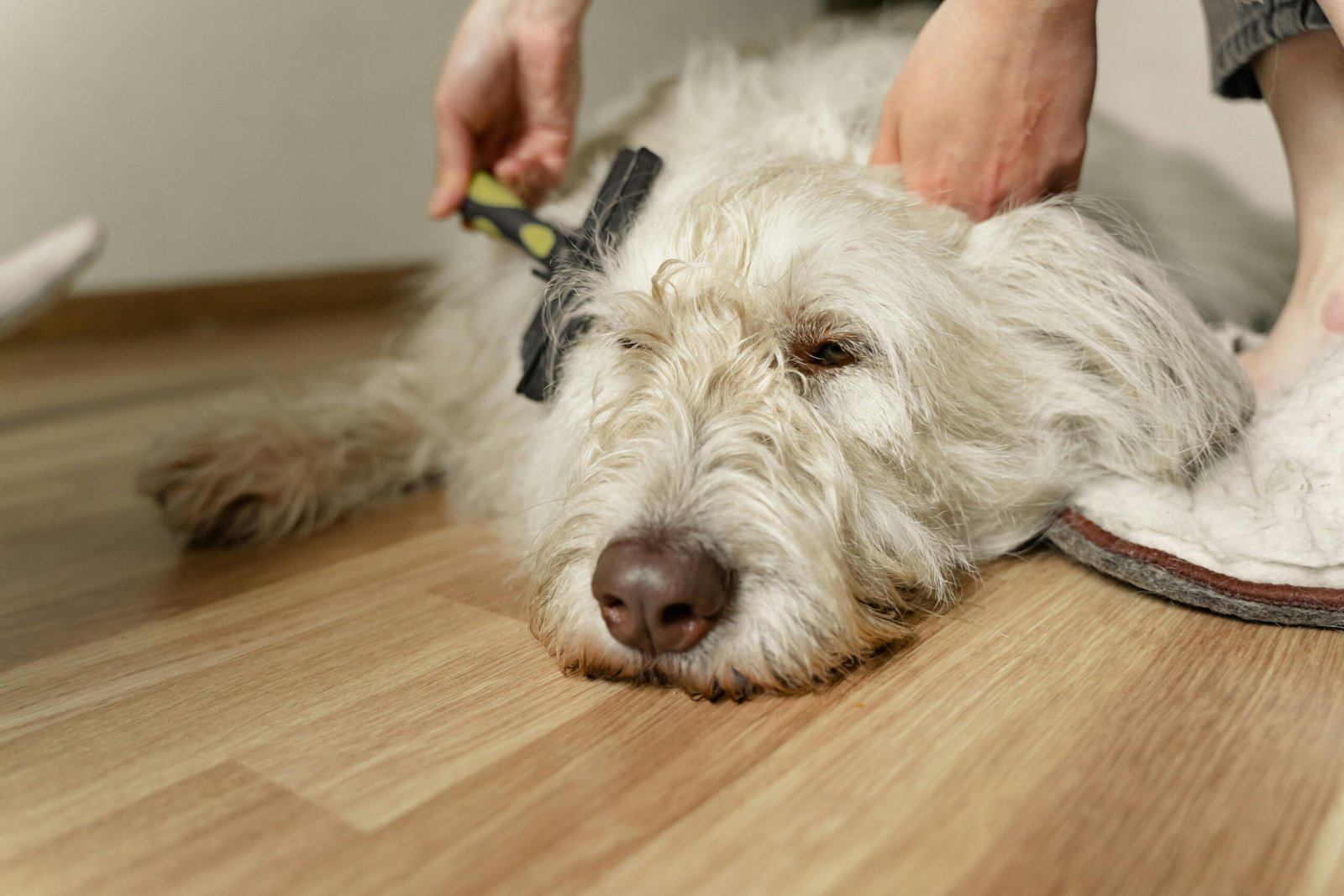Dog Grooming Tips: A Complete At-Home Guide
Estimated reading time: 8 minutes
Key Takeaways
- Regular grooming prevents matting, controls shedding, and helps spot health issues early.
- Essential tools include brushes, clippers, dog-specific shampoos, and nail trimmers.
- Bathing frequency depends on breed—typically every 4–8 weeks.
- Positive reinforcement makes grooming sessions less stressful for your dog.
- Avoid common mistakes like using human shampoo or skipping ear/teeth care.
Table of Contents
- Introduction
- Essential Dog Grooming Supplies
- Step-by-Step Guide: How to Groom a Dog at Home
- Pro Tips for Effective Dog Grooming
- Common Dog Grooming Mistakes to Avoid
- When to Seek Professional Grooming Help
- Conclusion
- Frequently Asked Questions

Introduction
Dog grooming is more than just keeping your pup looking cute—it’s a vital part of their health and happiness. Regular grooming prevents matting, controls shedding, and helps you spot skin issues, parasites, or lumps early. Plus, grooming at home saves money, strengthens your bond, and keeps your dog comfortable.
According to experts, consistent grooming can even reduce vet visits by catching problems before they worsen (Elanco, ASPCA).
This dog grooming guide covers everything you need: essential tools, step-by-step techniques, pro tips, and common mistakes to avoid. Whether you’re a first-time owner or a seasoned pet parent, these dog grooming tips will help you master at-home care.
Essential Dog Grooming Supplies
Before you start, gather the right tools. Using the wrong products can irritate your dog’s skin or make grooming harder. Here’s what you’ll need:
- Brushes/combs:
- Slicker brushes for long-haired breeds (e.g., Golden Retrievers).
- Bristle brushes for short-haired dogs (e.g., Beagles).
- De-matting combs for tangled fur.
- Clippers/scissors:
- Blunt-tipped scissors for safety.
- Clippers with adjustable guards for trimming.
- Shampoos/conditioners:
- pH-balanced, dog-specific formulas (oatmeal for sensitive skin).
- Nail trimmers/styptic powder:
- Guillotine or scissor-style trimmers.
- Styptic powder to stop bleeding if you nick the quick.
- Ear/teeth care:
- Vet-approved ear-cleaning solution.
- Dog toothbrush and enzymatic toothpaste.
Pro Tip: Never use human shampoo—it disrupts your dog’s skin pH and can cause rashes (AKC). For more tips on dog dental care, check out our complete guide to brushing your dog’s teeth.

Step-by-Step Guide: How to Groom a Dog at Home
1. Brushing Your Dog’s Coat
Brushing removes dirt, loose hair, and prevents mats. Follow these dog brushing techniques:
- Short-haired dogs: Use a bristle brush in the direction of hair growth.
- Long-haired dogs: Start with a slicker brush, then a wide-tooth comb.
- Frequency: Daily for long coats; weekly for short coats.
Did you know? Brushing distributes natural oils for a shiny coat (Elanco). For dogs with excessive shedding, explore our dog shedding solutions guide.
2. Bathing Your Dog
- Water temperature: Lukewarm (not hot!).
- Shampoo: Lather with dog-specific shampoo, avoiding eyes/ears.
- Rinse thoroughly: Leftover shampoo can cause itching.
- Dry completely: Use a towel or low-heat blow dryer.
Frequency: Bathe every 4–8 weeks, depending on breed (Homes Alive). For sensitive skin, learn about choosing the best shampoos for dogs.
3. Trimming Nails Safely
- Cut just the tip of the nail, avoiding the pink quick.
- If you nick the quick, apply styptic powder to stop bleeding.
- Overgrown nails can cause pain and joint issues (AKC).
4. Cleaning Ears and Teeth
- Ears: Wipe the outer ear with a vet-approved solution and cotton pad.
- Teeth: Brush 2–3 times weekly with dog toothpaste to prevent tartar.

Pro Tips for Effective Dog Grooming
- Keep sessions short (10–15 minutes) and reward with treats.
- Groom after exercise—your dog will be calmer.
- For mats: Spray detangling solution and gently work from the edges.
- Spot-clean between baths with dog wipes.
Expert insight: Positive reinforcement reduces stress during grooming (Elanco). Struggling with an anxious pup? Try these calming strategies for pets.
Common Dog Grooming Mistakes to Avoid
- Using human shampoo (causes skin irritation).
- Skipping nail/ear care (leads to infections).
- Bathing too often (dries out skin).
- Cutting mats too close to skin (risk of cuts).
Remember: Human products harm dogs’ skin pH (AKC). For a pet-safe home, check out our toxic plants guide.
When to Seek Professional Grooming Help
Some situations need a pro:
- Severe matting or skin conditions.
- Aggressive/anxious dogs.
- Breed-specific cuts (e.g., poodle trims).
Choose groomers certified by NDGAA or IPG for safety (AKC).

Conclusion
With these dog grooming tips, you can keep your pup healthy, happy, and looking great at home. Regular grooming saves money, strengthens your bond, and helps you spot health issues early.
Start a routine today—your dog will thank you! Share your grooming experiences in the comments below.
Sources:
Frequently Asked Questions
How often should I bathe my dog?
Most dogs need bathing every 4–8 weeks, but this varies by breed and lifestyle. Over-bathing can strip natural oils, leading to dry skin.
What if my dog hates grooming?
Start with short sessions, use treats, and stay calm. Gradually introduce tools and associate grooming with positive experiences. For anxious dogs, try calming techniques.
How can I tell if my dog has mats?
Mats appear as tangled, dense clumps of fur close to the skin. Check behind ears, under legs, and around the collar. Never cut mats too close to the skin—use a detangling spray and comb gently.